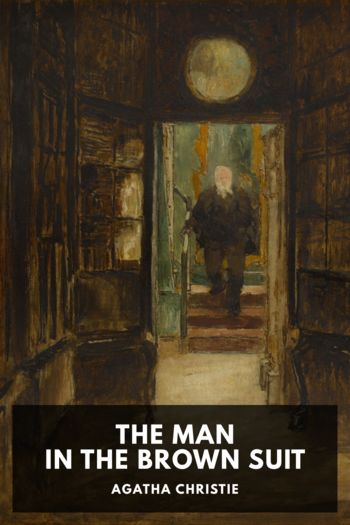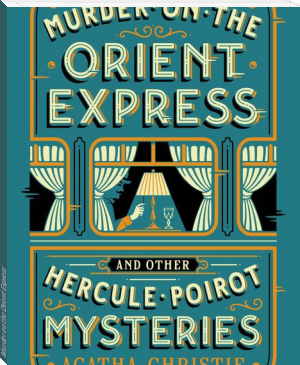author - "Agatha Christie"

Description
The Secret Adversary, Agatha Christie’s second novel, introduces Tommy and Tuppence, the two much-loved mystery-solving adventurers.
The novel centers around a mysterious young girl, suffering from amnesia, who was present on the sinking of the Lusitania. As Tommy and Tuppence try to unravel the mystery, they find themselves embroiled with mysterious millionaires and the dangerous politics of nation-states.
Contemporary reviews of The Secret Adversary were positive, and the success of the novel paved the way not just for future Tommy and Tuppence adventures, but for a long, storied career of literary success for Christie.

Description
The Mysterious Affair at Styles isn’t just Agatha Christie’s first Poirot novel, it was the only Poirot novel in the public domain until 2019. It was written on a bet that Christie couldn’t write a detective novel in which the reader couldn’t deduce the criminal. Her attempt laid the foundation for one of literature’s most famous detectives.
In this novel we’re introduced to Poirot as he’s settling in to a new life in England. After a woman is murdered at the country estate he’s visiting, he has to use his detective skills to catch the criminal. The Mysterious Affair at Styles sets the stage for the Golden Age of Detective Fiction, and has everything you’d expect from a story rich in those classic detective fiction tropes.

ohn left me, and a few minutes later I saw him from my window walking slowly across the grass arm in arm with Cynthia Murdoch. I heard Mrs. Inglethorp call "Cynthia" impatiently, and the girl started and ran back to the house. At the same moment, a man stepped out from the shadow of a tree and walked slowly in the same direction. He looked about forty, very dark with a melancholy clean-shaven face. Some violent emotion seemed to be mastering him. He looked up at my window as he passed, and I recognized him, though he had changed much in the fifteen years that had elapsed since we last met. It was John's younger brother, Lawrence Cavendish. I wondered what it was that had brought that singular expression to his face.
Then I dismissed him from my mind, and returned to the contemplation of my own affairs.
The evening passed pleasantly enough; and I dreamed that night of that enigmatical woman, Mary Cavendish.
The next morning dawned bright and sunny, and I was full of the anticipation of a d

boy. But I can assure you that that sort of thing might touch the heart of an elderly spinster, and she might adopt you, and then there would be no need for you to be a young adventurer at all."
"I don't want to be adopted."
"I forgot you had a prejudice against it. I was only ragging you! The papers are full up to the brim with that type of thing. Now listen--how's this? 'Two young adventurers for hire. Willing to do anything, go anywhere. Pay must be good.' (We might as well make that clear from the start.) Then we might add: 'No reasonable offer refused'--like flats and furniture."
"I should think any offer we get in answer to that would be a pretty UNreasonable one!"
"Tommy! You're a genius! That's ever so much more chic. 'No unreasonable offer refused--if pay is good.' How's that?"
"I shouldn't mention pay again. It looks rather eager."
"It couldn't look as eager as I feel! But perhaps you are right. Now I'll read it straight through. 'Two young adventurers for h

Description
After her father’s death, young Anne Beddingfeld moves to London with her meagre inheritance, hopeful and ready to meet adventure. She witnesses a fatal accident at a Tube station and picks up a cryptic note dropped by the anonymous doctor who appeared on the scene. When Anne learns of a murder at the estate that the dead man was on his way to visit, it confirms her suspicion that the man in the brown suit who lost the note was not a real doctor.
With her clue in hand she gains a commission from the newspaper leading the search for the “man in the brown suit,” and her investigation leads her to take passage on a South Africa–bound ocean liner. On board, she meets a famous socialite, a fake missionary, a possible secret service agent, and the M.P. at whose estate the second murder occurred. She learns about a secretive criminal mastermind known only as the Colonel and of stolen diamonds connected to it all.
During the voyage, she evades an attempt on her life, and in South Africa she escapes from a kidnapping and barely survives another attack on her at Victoria Falls. She falls in love, finds the diamonds, and discovers the truth about the two deaths in London that started it all. Finally, she confronts the mysterious criminal mastermind, the Colonel.
Published in 1924 by the Bodley Head, The Man in the Brown Suit is Agatha Christie’s fourth novel. Unlike the classic murder mysteries that made her famous, The Man in the Brown Suit, like her second novel The Secret Adversary, is an international crime thriller.

Description
The Secret Adversary, Agatha Christie’s second novel, introduces Tommy and Tuppence, the two much-loved mystery-solving adventurers.
The novel centers around a mysterious young girl, suffering from amnesia, who was present on the sinking of the Lusitania. As Tommy and Tuppence try to unravel the mystery, they find themselves embroiled with mysterious millionaires and the dangerous politics of nation-states.
Contemporary reviews of The Secret Adversary were positive, and the success of the novel paved the way not just for future Tommy and Tuppence adventures, but for a long, storied career of literary success for Christie.

Description
The Mysterious Affair at Styles isn’t just Agatha Christie’s first Poirot novel, it was the only Poirot novel in the public domain until 2019. It was written on a bet that Christie couldn’t write a detective novel in which the reader couldn’t deduce the criminal. Her attempt laid the foundation for one of literature’s most famous detectives.
In this novel we’re introduced to Poirot as he’s settling in to a new life in England. After a woman is murdered at the country estate he’s visiting, he has to use his detective skills to catch the criminal. The Mysterious Affair at Styles sets the stage for the Golden Age of Detective Fiction, and has everything you’d expect from a story rich in those classic detective fiction tropes.

ohn left me, and a few minutes later I saw him from my window walking slowly across the grass arm in arm with Cynthia Murdoch. I heard Mrs. Inglethorp call "Cynthia" impatiently, and the girl started and ran back to the house. At the same moment, a man stepped out from the shadow of a tree and walked slowly in the same direction. He looked about forty, very dark with a melancholy clean-shaven face. Some violent emotion seemed to be mastering him. He looked up at my window as he passed, and I recognized him, though he had changed much in the fifteen years that had elapsed since we last met. It was John's younger brother, Lawrence Cavendish. I wondered what it was that had brought that singular expression to his face.
Then I dismissed him from my mind, and returned to the contemplation of my own affairs.
The evening passed pleasantly enough; and I dreamed that night of that enigmatical woman, Mary Cavendish.
The next morning dawned bright and sunny, and I was full of the anticipation of a d

boy. But I can assure you that that sort of thing might touch the heart of an elderly spinster, and she might adopt you, and then there would be no need for you to be a young adventurer at all."
"I don't want to be adopted."
"I forgot you had a prejudice against it. I was only ragging you! The papers are full up to the brim with that type of thing. Now listen--how's this? 'Two young adventurers for hire. Willing to do anything, go anywhere. Pay must be good.' (We might as well make that clear from the start.) Then we might add: 'No reasonable offer refused'--like flats and furniture."
"I should think any offer we get in answer to that would be a pretty UNreasonable one!"
"Tommy! You're a genius! That's ever so much more chic. 'No unreasonable offer refused--if pay is good.' How's that?"
"I shouldn't mention pay again. It looks rather eager."
"It couldn't look as eager as I feel! But perhaps you are right. Now I'll read it straight through. 'Two young adventurers for h

Description
After her father’s death, young Anne Beddingfeld moves to London with her meagre inheritance, hopeful and ready to meet adventure. She witnesses a fatal accident at a Tube station and picks up a cryptic note dropped by the anonymous doctor who appeared on the scene. When Anne learns of a murder at the estate that the dead man was on his way to visit, it confirms her suspicion that the man in the brown suit who lost the note was not a real doctor.
With her clue in hand she gains a commission from the newspaper leading the search for the “man in the brown suit,” and her investigation leads her to take passage on a South Africa–bound ocean liner. On board, she meets a famous socialite, a fake missionary, a possible secret service agent, and the M.P. at whose estate the second murder occurred. She learns about a secretive criminal mastermind known only as the Colonel and of stolen diamonds connected to it all.
During the voyage, she evades an attempt on her life, and in South Africa she escapes from a kidnapping and barely survives another attack on her at Victoria Falls. She falls in love, finds the diamonds, and discovers the truth about the two deaths in London that started it all. Finally, she confronts the mysterious criminal mastermind, the Colonel.
Published in 1924 by the Bodley Head, The Man in the Brown Suit is Agatha Christie’s fourth novel. Unlike the classic murder mysteries that made her famous, The Man in the Brown Suit, like her second novel The Secret Adversary, is an international crime thriller.




